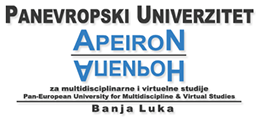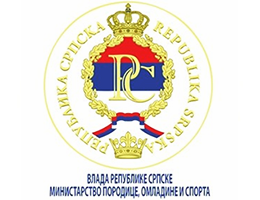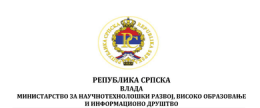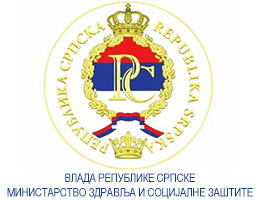Resultative Success of Breath-Hold Diving (Apnea) Depending From Environment Conditions
Volume 5, Issue 1 (2015)
Volume 5, Issue 1 (2015)
Resultative Success of Breath-Hold Diving (Apnea) Depending From Environment Conditions
Abstract:
The research was conducted on the specimen of 21 examinees - students Physical education and sport Faculty Istocno Sarajevo University, enrolled in the IIIrd year of school year 2010/2011, males, age of 23=6 months. By random choice they were divided into two groups during lessons in nature within student camp Tjentiste based. The basic aim of the research is to establish the resultative success of diving by apnea(long distance) depending of natural conditions of the environment(air and water temperature). The specimen of variables represented: length of breath –hold diving (apnea) expressed in metres, water temperature expressed in degress(°C) and air temperature expressed in degrees(°C).
Testing of all examinees were carried out at two time intervals, and at different temperatures of water in pool varying from 17 to 22°C and air temperature varying from 22 to 26°C.
For establishing the resultative success in diving by apnea in length depending from temperature of pool water and air temperature, the comparisson was made of results of basic central and dispersion parameters and analyses of t-test results.
Through analyses of the obtained results, it can be concluded that pool water temperature and air temperature have significant impact on the apnea diving in length in such a way that the increase of pool water temperature for 3 to 5 °C and air temperature for 2 to 4°C contributed achieving better results in apnea diving in length.
Testing of all examinees were carried out at two time intervals, and at different temperatures of water in pool varying from 17 to 22°C and air temperature varying from 22 to 26°C.
For establishing the resultative success in diving by apnea in length depending from temperature of pool water and air temperature, the comparisson was made of results of basic central and dispersion parameters and analyses of t-test results.
Through analyses of the obtained results, it can be concluded that pool water temperature and air temperature have significant impact on the apnea diving in length in such a way that the increase of pool water temperature for 3 to 5 °C and air temperature for 2 to 4°C contributed achieving better results in apnea diving in length.
Keywords:
diving, apnea, examinees,temperature, t-test
Full Text:
References:
- Bala, G. (2002). Some problems and suggestions in measuring motor behavior of preschool children. Kinesiologika Slovenica, 5, 1-2:5-10.
- Bala, G., A. Hošek. i Momirović, K. (2002). Aberantno ponašanje i motoričke sposobnosti predškolske djece. Teme, 2002, 3:371-382.
- Geiß, H. C., Parhofer, K. G., & Schwandt, P. (2001). Parameters of childhood obesity and ther relationship to cardiovascular risik factors in heathy prepubescent children. International Journal of Obesity, 25, 830-7.
- Counsilman, J. E. (1978). Nauka o plivanju, Sportska knjiga, Beograd, str. 9.
- Hsu, T. G. i Hsu, K. M. (1997). The effect of shoulder isokinetic strenght on speed and propulsive forces in front crawl swimming. Medicine and Science in Sport and Exercise, 29 (5).
- Issurin, V. i Vrijens, J. (1996). Altitude training in alite sport, Flamish Journal for Sports Medicine and Sport Science, 7, 66, 24-41.
- Kazazović, B. (1998). Plivanje kao sport i sredstvo zdravstvenog i tjelesnog odgoja. FEDERACIJA BOSNE I HERCEGOVINE Ministarstvo obrazovanja, nauke, kulture i sporta. IP SVETLOST d.d. Zavod za udžbenike i nastavna sredstva. Sarajevo, str. 35-48.
- Koprivica, D. (2000). Savremeno ronjenje. "BODEX". Beograd. Str. 297:299.
- Kazazović, B. (2008). Plivanje, biomehanika, metodika, strenažni proces, primjenjeno plivanje, /3 izmjenjeno i dopunjeno izdanje/; "Grafičar promet" d.o.o Sarajevo, str. 59-74.
- McLeod. I. A. (2010). Swimming Anatomy. Plivanje Anatomija. Datastatus. Beograd 2 – 3.
- Leko, G. (2001). Definiranje odnosa motoričkih sposobnosti i antropometrijskih karakteristika plivača. (Doktorska disertacija). Zagreb: Fakultet za fizičku kulturu.
- Lokken, B. (1998). Swimming fitness testing. Exercise Physiology.
- Malacko, J. (2000). Osnove sportskog treninga. Antropološki status sportista, Sportska akademija Beograd, str. 47
- Maver, H., Rudan, P. i Tarbuk, D. (1975). Antropometrija, tiskara "Varteks" Varaždin, Zagreb, str. 10-47.
- Perić, D. (1996). Operacionalizacija 2. FINE graf, Beograd, str. 140-163 i 227-247.
- Perić, D. (2001). Statistika, statističke aplikacije u istraživanjima sporta i fizičkog vaspitanja, IDEAPRINT, Beograd, str. 177- 205 i 273-311.
- Persyn U., De Maeyer J., & Vervaeke H. (1975) Investigation of hydrodynamic determinants of competitive swimming strokes. International Series on Sport Sciences 2, 214-222






